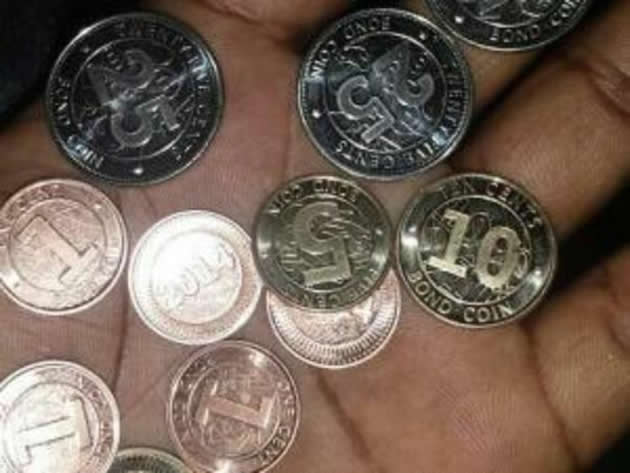Rand devaluation brings no joy to consumer

Lawrence Chitumba Review Writer
The recent devaluation of the South African Rand has brought no joy for the consumer as prices of SA sourced goods have not fallen. An OK Zimbabwe official who requested anonymity said that his organisation’s pricing was not being affected by the fall of the rand because their prices were quoted against the US$, hence the devaluation did not have an effect on the prices of goods in their supermarket chain.
The supermarket chain was among the last to rate the rand coins having only started to do so at the end of October long after most other retailers had started rejecting the coins or devaluing them.
Another supermarket chain official said that procurement is only a part of their cost and as long as the other cost remain the same then the fall of the rand will not bring much change.
“We pay rentals, salaries, duty and taxes as well as transport in US dollars. That is not all, you can add other things like utilities and you get the picture. So the fall of the rand in itself is not going to result in drastic price reductions on the supermarket shelves.” The official declined to give figures which would support his position that procurement costs are not a major factor in pricing of goods.
With local industry operating below capacity, most fast moving consumer goods are imported from South Africa.
It would appear that the retail sector is following the same old model where any rise in any cost is immediately passed to the consumer but when the trend is the other way round, they hesitate before passing on the benefit to the buyer.
Flea market traders admitted that they are cashing on in the fall of the rand by maintaining their US dollar prices when their procurement cost have gone down.
“The whole process did not affect our business because we sell our goods in US dollars and then exchange the dollars to rands.
“In fact we are now able buy more goods than we used to do in the past which we sell at more profit,” said a flea market trader, Natasha Sango.
Mrs Siyachitema from the Consumer Council of Zimbabwe said the devaluation of the rand was affecting consumers as it has actually pushed up prices.
“Consumers had become used to a situation where they were rated at 10 rands to $1 now that they are being rated at $1 to 14 rands it makes the products a bit expensive as retailers begin to feel the pinch of the rand devaluation”, said Siyachitema.
Nationally, the fall of the rand has brought with it a desperate situation for the already ailing economy says the Zimtrade official Sifelani Javangwe.
“The fall of the rand means that prices of goods have become cheaper in South Africa, and individuals now prefer to buy things like paint there. In the process paint companies in the country will suffer as less and less people will buy from them.
“What it means is that if the paint is not bought then the company will have no option but to downsize its operations meaning that there will be less people with money to spend on other commodities and the cycle goes on, he said.
Mr Javangwe said the country needed a situation whereby goods that are used by school going kids create jobs for their elders so that when they too grow up they will be able to be employed in those same companies not what is happening now.
“We need a culture where we promote the usage of locally produced products so that our industries can grow thereby revitalising the economy”, he said.
The fall of the rand has brought with it a bag of mixed reactions from the different economic strata of the Zimbabwean economy.
The reactions vary depending on the level of economic activities, from confusion to enthusiasm as well as to desperation.
For the common person on the ground the devaluation has resulted in frustration and confusion so to speak as the situation is more complex when it comes day to day transactions such as when buying vegetables, bread and other consumables using the rand as it is now being rated at 14 rands to $1 contrary to what people had become used to, which is $1 to 10 rands.
On the other hand vendors put the blame on wholesalers where they get their goods.
They accuse the wholesalers of rating the rand or simply refusing to accept the coins saying that rand coins were no longer a valuable currency to use.
“At Mbare Musika retail traders there rate the rand and at times do not accept the rand coins saying that they are no longer a valuable currency forcing us to increase our prices here.
“Sometimes after having sold our products using rand coins, we will have to keep them at home because we can’t use them anywhere to order more goods. We are stuck with useless money.
“The situation is confusing and we appeal to the Government to intervene and give us the correct position regarding the rand coins,” said Evelyn Tsatsire who sales her products at the Simon Muzenda commuter rank formerly Fourth Street.
Other vendors including airtime and ice cream sellers concurred with Evelyn and said their businesses were greatly being affected by the development on the rand.
Kombi crews also said the situation was confusing as they at times ended up not knowing how much they should charge commuters.
“At times we charge commuters six rand and at times seven rand so we are not sure what we are actually supposed to be charging.
“The problem starts when we want to buy things like fuel, food, etc; we are rated as a result we have no option but to pass on the costs to the commuters.
“Even when we go to cash our daily takings at the end of the day the employers also want daily takings rated to the current rate because they know we charge more than five rand,”said Carlington Nyamuchetera a kombi driver at Simon Muzenda commuter rank.
He said police at roadblocks no longer accept rand coins when paying for fines adding that there was need for a consensus on the correct rating and usage of rand.
So Zimbabwe has come a full circle from a position where people appeared to be ambivalent about the bond coins, which have now become the coin currency of choice.
For the common person on the ground the devaluation has resulted in frustration and confusion so to speak as the situation is more complex when it comes day to day transactions such as when buying vegetables, bread and other consumables using the rand as it is now being rated at 14 rands to $1 contrary to what people had become used to, which is $1 to 10 rands.









Comments